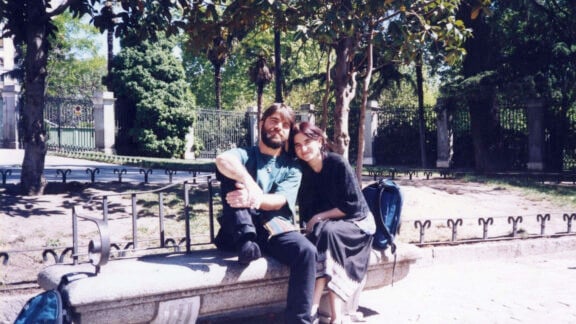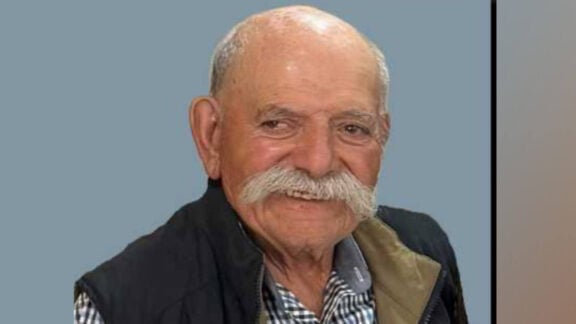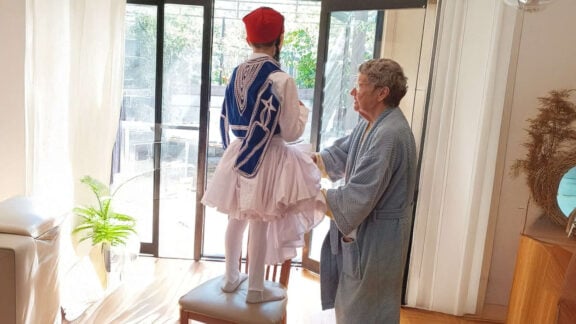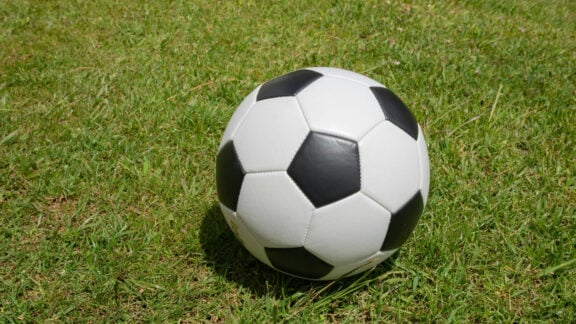Arriving in a hot and fly-ridden Bonegilla on the NSW/Victorian border in October 1967, fresh off the boat from Greece, Ilias Tsinanis recalls his father’s first words: “My God, what have I done to my family?”
Bonegilla Migrant Reception and Training Centre was an ex-army camp that processed over 300,000 post-war migrants between 1947 and 1971, with an estimated 18,000 Greeks beginning their Australian journey there.
Ten-year-old Ilias Tsinanis was one of them, living in Bonegilla for two months with his older brother and parents. He remembers the flies, “meat and three veg” slopped onto his canteen tray, and playing cricket for the very first time. Once, he almost stepped on a brown snake while walking with his mother.
Uncertainty lingered in the air as fresh migrants lived an in-between life under the Assisted Passage Scheme, waiting to be allocated jobs by the Australian government.
The cane fields in Far North Queensland had a shortage of workers at the time, Ilias recalls.
“Everyone was terrified” of being sent there, as it was only the men who were assigned the jobs, forced to leave their families behind.
For young Ilias, the experience of moving to Australia seesawed between the thrill of adventure—he fondly remembers running around the decks of The Patris—and a fog of unease.
“It wasn’t traumatic, but there was anxiety because you could sense the apprehension from the adults… the anguish of my parents did seep down to us.”
“The Greeks were sold a suburban dream. Bonegilla wasn’t that,” he tells Neos Kosmos.
“I would hazard a guess and say, if people had the means to extricate themselves from that [Assisted Passage Scheme] contract upon landing in Bonegilla, I think a majority would have said, ‘No, this is not for us, we’re going back.'”
Migrants were assessed for work based purely on physical standards—no other skills were required. Ilias says there were no psychosocial tests; they were wanted as mules, or “factory fodder”.
Young Ilias and his family moved first to the Maribyrnong Migrant Hostel, then to a three-bedroom house in Richmond, which they shared with two other families. He describes it as “a ’60s brick veneer that we thought was sheer luxury.”
Both his parents laboured—his father in a foundry, his mother in a factory. One day at work, Ilias’ father was pouring molten metal when it exploded, burning his head, back, and shoulders. He had to sleep on his stomach for months and received no compensation from the company. During his recovery, he was let go.
Many early migrants suffered under loose employment conditions. Safety regulations were more lax, training minimal, and language barriers made it difficult to understand work protocols.

A few years after her husband’s injury, Ilias’ mother was cleaning a hydraulic machine at work. Though switched off, the machine closed onto her arm, crushing it completely. Again, the family received no compensation and she was laid off during her recovery.
Today, Bonegilla is a heritage-listed snapshot of the migrant experience, currently hosting the exhibition Finding Home for the next year.
Finding Home displays items from the Dardalis Archives of the Hellenic Diaspora, which preserve around 180,000 artefacts related to Greek Australians. These include newspapers, newsreels, films, art objects, photographs and other materials.
Emmanouela Giannoulidou, Greek archivist and exhibition curator at La Trobe University, has spent the past year exploring the archives. She found herself reflecting on how first-generation Greeks made this country home—she says it was “through bringing their roots to Australia with them.”
“In part of the exhibition we have an open suitcase with some clothing, a passport and two framed family photographs,” Emmanouela tells Neos Kosmos. It’s a simple and moving reminder of how little many migrant families started with.
The exhibition follows a storyline: beginning with the reasons many Greeks migrated to Australia and the long journey by sea, then arriving at the docks in Port Melbourne.
It then highlights the strong work ethic of Greek migrants and the many businesses they built. It also explores the vital role the Greek Orthodox Church played in maintaining cultural identity in a new land.
Finding Home also delves into the Greek celebration of culture through language, theatre, folk traditions, music and dance.

Ilias Tsinanis spoke at the exhibition’s launch last Friday, returning to Bonegilla for the first time since childhood—this time with his son, Zac.
On maintaining a connection to family and cultural legacy, Ilias says: “It’s important to hold onto these memories because they provide a context for your life. It grounds you.”
“Going back [to Bonegilla] with Zac was a very emotional and moving moment. He enjoyed the experience as well, and he says he will never forget it.”
In light of anti-immigration crackdowns by U.S. Immigration and Customs Enforcement (ICE), Ilias says it’s more important than ever to recognise Australia’s multicultural foundations.
“We’re a nation of immigrants and refugees that have contributed and helped to build this country,” he tells Neos Kosmos.
“I think there are some forces within Australia currently who hold the view that if your colour isn’t right or if your surname is a little bit different, that you’re not a legitimate human being. Mr Trump is leading that example… it’s more important than ever to reflect and place value on the beginnings [of this country].”
For Ilias’ parents—functionally illiterate in their native Greek and with no English upon arrival in Port Melbourne—the pride of seeing their grandchildren flourish into adulthood is, he says, “their reward for a lot of sacrifice.”
Now, Ilias is living his self-described “ethnic parent’s dream,” with son Zac working as a lawyer and daughter Tia in the final months of her medical degree.
“Australia, despite the initial hardships, provided those opportunities for us. We’re now proud Australian Greeks.”







